C#网络程序设计(2)Socket基础编程
本节介绍如何使用基础Socket实现TCP通信。
(1)Socket详细介绍:
Socket的英文原义是“孔”或“插座”。通常称作"套接字",用于描述IP地址和端口,是一个通信链的句柄。在Internet上的主机一般运行了多个服务软件,同时提供几种服务。每种服务都打开一个Socket,并绑定到一个端口上,不同的端口对应于不同的服务。Socket正如其英文原意那样,象一个多孔插座。
Socket的发展:
七十年代中,美国国防部高研署(DARPA)将TCP/IP的软件提供给加利福尼亚大学Berkeley分校后,TCP/IP很快被集成到Unix中,同时出现了许多成熟的TCP/IP应用程序接口(API)。这个API称为Socket接口。 今天,SOCKET接口是TCP/IP网络最为 通用的API,也是在INTERNET上进行应用开发最为通用的API。
九十年代初,由Microsoft联合了其他几家公司共同制定了一套 WINDOWS下的网络编程接口,即Windows Sockets规范(简称WinSock)。它是Berkeley Sockets的重要扩充,主要是增加了一些异步函数,并增加了符合 Windows 消息驱动特性的网络事件异步选择机制。
WinSock:
Windows Sockets规范是一套开放的、支持多种协议的 Windows下的网络编程接口。 Windows Socket规范1.1版,只支持TCP/IP协议。 Windows Socket规范2.0版,支持多种协议。
(2)套接字分类:
根据不同的应用协议的需要,套接字分为字节流套接字(stream Socket),数据报套接字(datagram Socket),原始套接字(raw Socket):
1.字节流套接字(stream Socket) 流套接字用于提供面向连接、可靠的数据传输服务。 该服务将保证数据能够实现无差错、无重复发送,并按顺序接收。 流套接字之所以能够实现可靠的数据服务,原因在于其使用了传输控制协议,即TCP(The Transmission Control Protocol)协议。 2.数据报套接字(datagram Socket) 数据报套接字提供了一种无连接的服务。 该服务并不能保证数据传输的可靠性,数据有可能在传输过程中丢失或出现数据重复,且无法保证顺序地接收到数据。 数据报套接字使用UDP(User Datagram Protocol)协议进行数据的传输。 由于数据报套接字不能保证数据传输的可靠性,对于有可能出现的数据丢失情况,需要在程序中做相应的处理。 3.原始套接字(raw Socket) 原始套接字与标准套接字(标准套接字指的是前面介绍的流套接字和数据报套接字)的区别在于: 原始套接字可以读写内核没有处理的IP数据包,而流套接字只能读取TCP协议的数据,数据报套接字只能读取UDP协议的数据。 因此,如果要访问其他协议发送数据必须使用原始套接字。 原始套接字允许对底层协议如IP或ICMP进行直接访问,功能强大但使用较为不便,主要用于一些协议的开发。
根据套接字的不同,套接字编程又分为:面向连接,无连接,原始套接字编程。
套接字的TCP通信流程:
TCP是面向连接的,程序运行后,服务器有一个Socket一直处于侦听状态,客户端Socket与服务器通信之前必须首先发起连接请求,服务器上负责侦听的Socket接受请求并另外创建一个Socket与客户端通信息,自己则继续侦听新的请求。
(3)Socket编程实例:
1)面向连接-基于TCP:
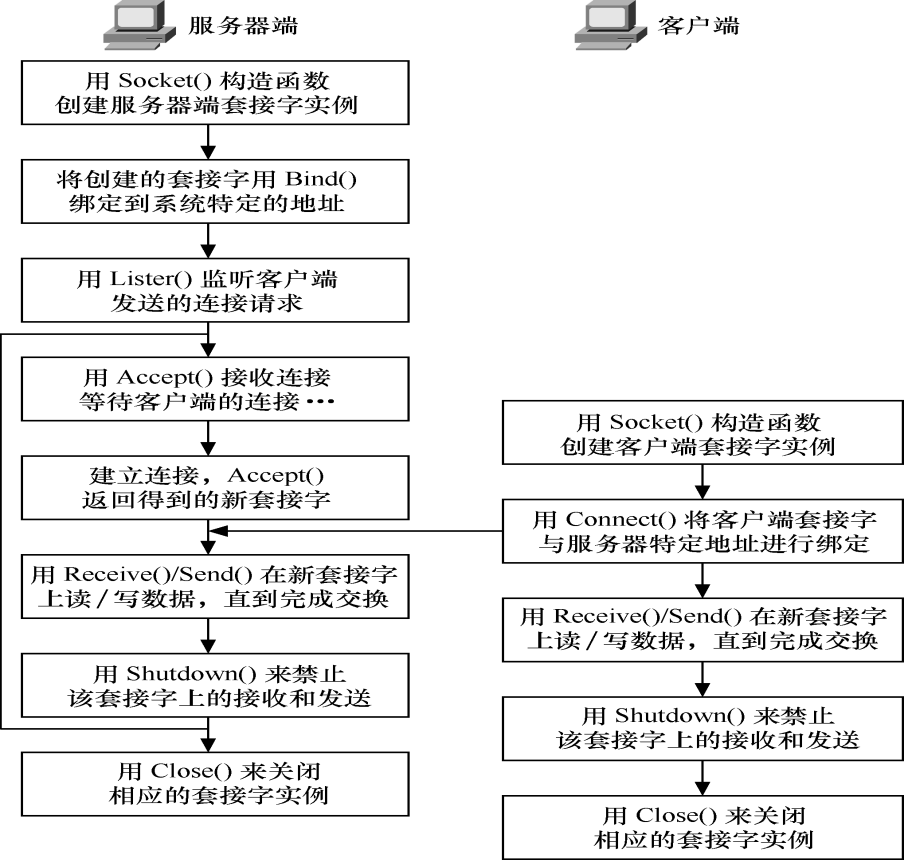
服务器端(带窗体):
using System; using System.Collections.Generic; using System.ComponentModel; using System.Data; using System.Drawing; using System.Linq; using System.Text; using System.Threading.Tasks; using System.Windows.Forms; //添加的引用 using System.Net; using System.Net.Sockets; using System.Threading; namespace TCPServer { public partial class SocketTcpServerForm : Form { private int port; Socket tcpSocket=null; List<Socket> clientSockets; public SocketTcpServerForm() { InitializeComponent(); CheckForIllegalCrossThreadCalls = false; port = 10000;//默认使用端口号10000 portTextBox.Text = port.ToString(); clientSockets= new List<Socket>(); } private void Form1_Load(object sender, EventArgs e) { } private void portTextBox_TextChanged(object sender, EventArgs e) { } private void listenButton_Click(object sender, EventArgs e) { string portString = portTextBox.Text; port = int.Parse(portString); IPEndPoint ipep = new IPEndPoint(IPAddress.Any,port); tcpSocket = new Socket(AddressFamily.InterNetwork,SocketType.Stream,ProtocolType.Tcp); tcpSocket.Bind(ipep); tcpSocket.Listen(10); showDataListBox.Items.Add("1.开始监听端口" + port.ToString() + "......"); showDataListBox.Items.Add("2.等待客户端连接......"); Thread listenThread = new Thread(ListenConnect); listenThread.Start(tcpSocket); } private void ListenConnect(object obj) { Socket tcpSocket = (Socket)obj; while (true) { Socket client = tcpSocket.Accept(); clientSockets.Add(client); Thread sonProcess = new Thread(acceptClient); sonProcess.Start(client); } } private void acceptClient(object client) { Socket socketClient = (Socket)client; IPEndPoint remoteIP = (IPEndPoint)socketClient.RemoteEndPoint; socketClient.Send(Encoding.UTF8.GetBytes("已连接到服务端在端口:"+port.ToString()),SocketFlags.None); showDataListBox.Items.Add("客户端连接:"+remoteIP.Address+"("+remoteIP.Port+")"); while (true) { //一直接收客户端发来的信息 try { byte[] receiveData = new byte[64]; int longth = socketClient.Receive(receiveData); string s = Encoding.UTF8.GetString(receiveData); showDataListBox.Items.Add(s + "(" + socketClient.ToString() + ")"); if (s == "exit") { showDataListBox.Items.Add("客户端断开连接" + "(" + socketClient.ToString() + ")"); clientSockets.Remove(socketClient); socketClient.Close(); break; } }catch(Exception e){ Console.WriteLine("出现错误"); } } } private void sendDataButton_Click(object sender, EventArgs e) { string sendData = sendDataBox.Text; foreach (Socket s in clientSockets) { s.Send(Encoding.UTF8.GetBytes(sendData)); } } } }
客户端(控制台):
using System; using System.Collections.Generic; using System.Linq; using System.Text; using System.Threading.Tasks; using System.Net; using System.Net.Sockets; using System.Threading; namespace TCPClient { class Program { private static bool flag = true; static void Main(string[] args) { Socket newclient = new Socket(AddressFamily.InterNetwork, SocketType.Stream, ProtocolType.Tcp); Console.Write("请输入要连接的IP:"); string ipadd = Console.ReadLine(); Console.Write("请输入要连接的端口:"); int port = Convert.ToInt32(Console.ReadLine()); IPEndPoint ie = new IPEndPoint(IPAddress.Parse(ipadd), port);//服务器的IP和端口 try { newclient.Connect(ie); } catch (SocketException e) { Console.WriteLine("连接服务器失败"); Console.WriteLine(e.ToString()); return; } //在第一次连接到客户端时,服务端会返回一个字符串,客户端接收并显示在控制台上 byte[] data = new byte[1024]; int recv = newclient.Receive(data); string stringdata = Encoding.UTF8.GetString(data, 0, recv); Console.WriteLine(stringdata); //启动一个子线程专门用来接收服务器发送的数据 Thread receiveThread = new Thread(receiveData); receiveThread.Start(newclient); while (true) { string input = Console.ReadLine(); newclient.Send(Encoding.UTF8.GetBytes(input), SocketFlags.None); if (input == "exit"){ flag=false; break; } } Console.WriteLine("与服务端断开连接"); newclient.Shutdown(SocketShutdown.Both); newclient.Close(); Console.ReadKey(); } private static void receiveData(object obj) { Socket newclient = (Socket)obj; byte[] data=new byte[64]; while(flag==true) { try { int length = newclient.Receive(data); string s = Encoding.UTF8.GetString(data, 0, length); Console.WriteLine("服务端传来数据:" + s); } catch(Exception e) { break; } } } } }
显示效果:
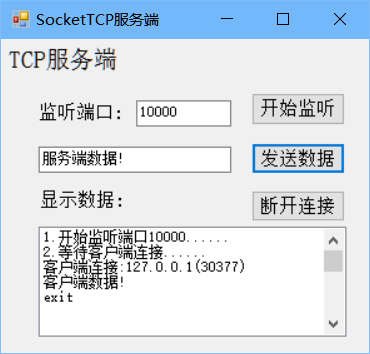
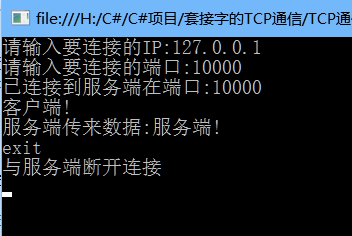
2)无连接-基于UDP
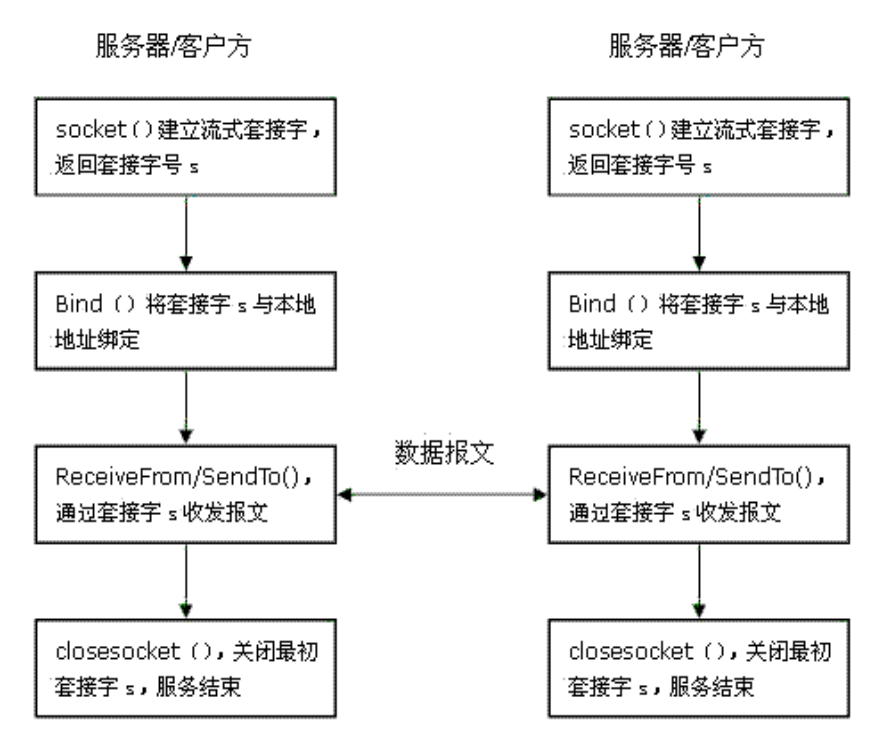
服务端:
using System; using System.Collections.Generic; using System.Linq; using System.Text; using System.Net; using System.Net.Sockets; namespace MyUDPServer { class Program { static void Main(string[] args) { int recv; byte[] data = new byte[1024]; IPEndPoint ipep = new IPEndPoint(IPAddress.Any, 9050);//定义一网络端点 Socket newsock = new Socket(AddressFamily.InterNetwork, SocketType.Dgram, ProtocolType.Udp);//定义一个Socket newsock.Bind(ipep);//Socket与本地的一个终结点相关联 Console.WriteLine("Waiting for a client.."); IPEndPoint sender = new IPEndPoint(IPAddress.Any, 0);//定义要发送的计算机的地址 EndPoint Remote = (EndPoint)(sender);// recv = newsock.ReceiveFrom(data, ref Remote);//接受数据 Console.WriteLine("Message received from{0}:", Remote.ToString()); string stringdata = Encoding.ASCII.GetString(data, 0, recv); Console.WriteLine(stringdata); string welcome = "Welcome to my test server!"; data = Encoding.UTF8.GetBytes(welcome); newsock.SendTo(data, data.Length, SocketFlags.None, Remote); while (true) { data = new byte[1024]; recv = newsock.ReceiveFrom(data, ref Remote); Console.WriteLine(Encoding.UTF8.GetString(data, 0, recv)); newsock.SendTo(data, recv, SocketFlags.None, Remote); } } } }
客户端:
using System; using System.Collections.Generic; using System.Linq; using System.Text; using System.Net; using System.Net.Sockets; namespace MyUDPClient { class Program { static void Main(string[] args) { byte[] data = new byte[1024];//定义一个数组用来做数据的缓冲区 string input, stringData; IPEndPoint server_ipep = new IPEndPoint(IPAddress.Parse("127.0.0.1"), 9050); Socket client = new Socket(AddressFamily.InterNetwork, SocketType.Dgram, ProtocolType.Udp); string welcome = "Hello,are you there?"; data = Encoding.UTF8.GetBytes(welcome); client.SendTo(data, data.Length, SocketFlags.None, server_ipep);//将数据发送到指定的终结点 IPEndPoint sender = new IPEndPoint(IPAddress.Any,0); EndPoint Remote = (EndPoint)sender; data = new byte[1024]; int recv = client.ReceiveFrom(data, ref Remote);//接受来自服务器的数据 Console.WriteLine("Message received from{0}:", Remote.ToString()); Console.WriteLine(Encoding.UTF8.GetString(data, 0, recv)); while (true)//读取数据 { input = Console.ReadLine();//从键盘读取数据 if (input == "exit")//结束标记 { break; } client.SendTo(Encoding.UTF8.GetBytes(input), Remote);//将数据发送到指定的终结点Remote data = new byte[1024]; recv = client.ReceiveFrom(data, ref Remote);//从Remote接受数据 stringData = Encoding.UTF8.GetString(data, 0, recv); Console.WriteLine(stringData); } Console.WriteLine("Stopping client"); client.Close(); } } }
显示效果:


3)原始套接字:
原始套接字编程流程:
1.创建原始套接字 2.定义数据包头部数据结构 3.发送报文 4.接收报文
IP报文首部:
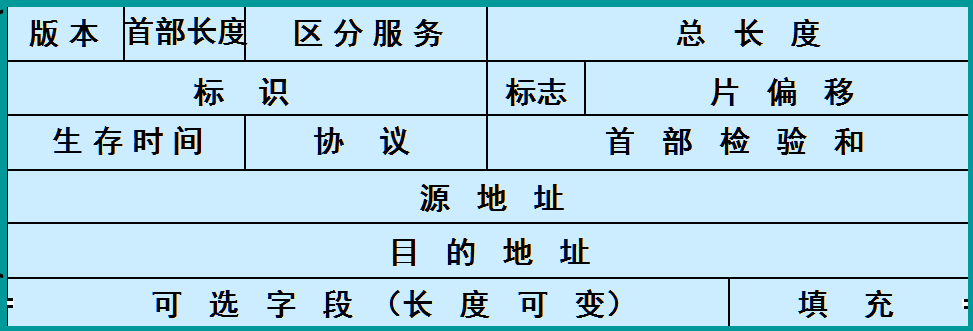
IP报文:

ICMP报文:(IP报文承载)

Ping程序的实现:
功能:PING命令是用于测试两个端系统之间的网络连通性。如果连通:输出源主机到目的主机的往返时延(时间),目的主机的操作系统(TTL)。如果不连通:输出可能原因。
原理:向网络上的另一个主机系统发送ICMP回送请求报文,如果指定系统得到了报文,它将把报文一模一样地传回给发送者。 ICMP echo & ICMP echo reply (rfc792)
TTL(Time To Live)生存期
指定数据报被路由器丢弃之前允许通过的网段数量。 TTL 是由发送主机设置的。
Windows 9x/Me TTL=32 LINUX TTL=64 Windows 200x/XP TTL=128 Unix TTL=255
PING程序的基本框架
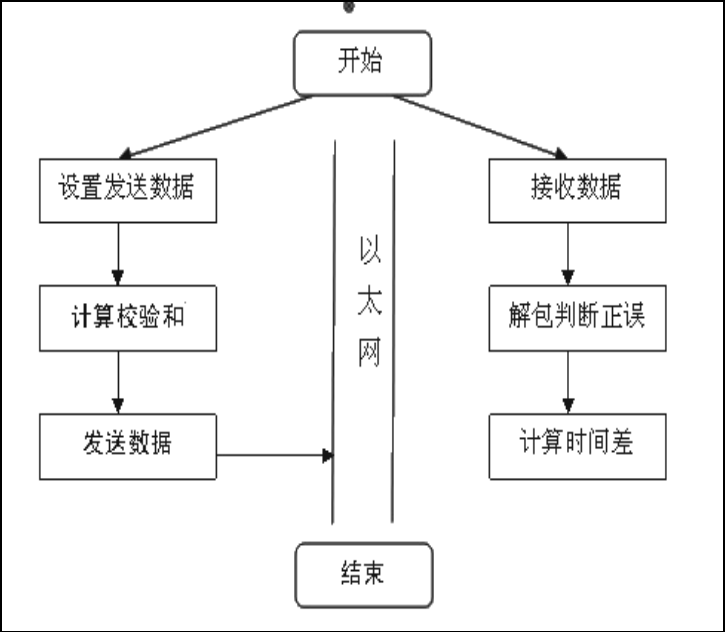
设置发送数据就是封装ICMP数据报的过程。需要两级封装:首先添加ICMP报头形成ICMP报文,再添加IP头形成IP数据报。注意:IP头不需要我们实现,由内核协议栈自动添加,我们只需要实现ICMP报文。
using System; using System.Collections.Generic; using System.ComponentModel; using System.Data; using System.Drawing; using System.Linq; using System.Text; using System.Windows.Forms; using System.Net; using System.Net.Sockets; using System.Net.NetworkInformation; namespace Csharp_PING { class MyPing { const int SOCKET_ERROR = -1; const int ICMP_ECHO = 8; public string PingHost(string host,ref int spentTime) { IPHostEntry serverHE, fromHE; int nBytes = 0; int dwStart = 0, dwStop = 0; Socket socket = new Socket(AddressFamily.InterNetwork, SocketType.Raw, ProtocolType.Icmp); socket.SetSocketOption(SocketOptionLevel.Socket, SocketOptionName.SendTimeout, 1000); socket.SetSocketOption(SocketOptionLevel.Socket, SocketOptionName.ReceiveTimeout, 1000); // Get the server endpoint try { serverHE = Dns.GetHostEntry(host); } catch (Exception) { return "Host not found"; //解释主机名失败 } // Convert the server IP_EndPoint to an EndPoint //用IP地址和端口号构造IPEndPoint对象 IPEndPoint ipepServer = new IPEndPoint(serverHE.AddressList[1], 0); EndPoint epServer = (ipepServer); //获得本地计算机的EndPoint fromHE = Dns.GetHostEntry(Dns.GetHostName());//Dns.GetHostName()获取本地计算机的主机名 IPEndPoint ipEndPointFrom = new IPEndPoint(fromHE.AddressList[0], 80); EndPoint EndPointFrom = (ipEndPointFrom); int PacketSize = 0; IcmpPacket packet = new IcmpPacket(); // 构建ICMP数据包 //构建数据报、报头字节、数据设计为字节 packet.Type = ICMP_ECHO; //值为8,1个字节 packet.SubCode = 0; //1个字节 packet.CheckSum = UInt16.Parse("0"); //2个字节 packet.Identifier = UInt16.Parse("45"); //2个字节 packet.SequenceNumber = UInt16.Parse("0"); //2个字节 int PingData = 32; // sizeof(IcmpPacket) - 8; packet.Data = new Byte[PingData]; //初始化ICMP包的数据部分,即Packet.Data for (int i = 0; i < PingData; i++) { packet.Data[i] = (byte)'a'; } //保存数据报的长度 PacketSize = PingData + 8;//ICMP数据包大小 Byte[] icmp_pkt_buffer = new Byte[PacketSize]; Int32 Index = 0; //调用Serialize方法 //报文总共的字节数 //序列化数据包,验证数据包大小 Index = Serialize( packet, icmp_pkt_buffer, PacketSize, PingData); if (Index == -1) { return "Error Creating Packet"; } //将ICMP数据包转换成 UInt16数组 //获取转换后的数组长度 Double double_length = Convert.ToDouble(Index); Double dtemp = Math.Ceiling(double_length / 2);//向上取整; int cksum_buffer_length = Convert.ToInt32(dtemp); //生成一个字节数组 UInt16[] cksum_buffer = new UInt16[cksum_buffer_length]; //初始化Uint16类型数组 int icmp_header_buffer_index = 0; for (int i = 0; i < cksum_buffer_length; i++) { cksum_buffer[i] = BitConverter.ToUInt16(icmp_pkt_buffer, icmp_header_buffer_index); icmp_header_buffer_index += 2; } //获取ICMP数据包的校验码 // 调用checksum,返回检查和 UInt16 u_cksum = checksum(cksum_buffer, cksum_buffer_length); //保存校验码 packet.CheckSum = u_cksum; // 再次序列化数据包 //再次检查报的大小 Byte[] sendbuf = new Byte[PacketSize]; Index = Serialize( packet, sendbuf, PacketSize, PingData); //如果有错误,给出提示 if (Index == -1) { return "Error Creating Packet"; } dwStart = System.Environment.TickCount; // 开始时间用socket发送数据报 //通过socket发送数据包 if ((nBytes = socket.SendTo(sendbuf, PacketSize, 0, epServer)) == SOCKET_ERROR) { return "Socket Error: cannot send Packet"; } // 初始化缓冲区, 接收缓冲区 //大小为ICMP报头+IP报头的大小(20字节),共32+8+20=60字节. Byte[] ReceiveBuffer = new Byte[60]; nBytes = 0; //接收字节流 bool recd = false; int timeout = 0; //循环检查目标主机响应时间 while (!recd) { try { nBytes = socket.ReceiveFrom(ReceiveBuffer, 60, SocketFlags.None, ref EndPointFrom); if (nBytes == SOCKET_ERROR)//如果超过时间限制,则提示 { return "Host not Responding"; } else if (nBytes > 0) { dwStop = System.Environment.TickCount - dwStart;// 停止计时 spentTime = dwStop; return "Reply from " + epServer.ToString() + " in " + dwStop + "ms. Received: " + nBytes + " Bytes." +" TTL="+PingTTl(host); } } catch (SocketException e) { return "Time Out"; } } socket.Close(); return ""; } //序列化数据包(计算数据包的大小并将数据转换成字节数组) public static Int32 Serialize(IcmpPacket packet, Byte[] Buffer, Int32 PacketSize, Int32 PingData) { //取得报文内容,转化为字节数组,然后计算报文的长度 Int32 cbReturn = 0; //数据报结构转化为数组 int Index = 0; Byte[] b_type = new Byte[1]; b_type[0] = (packet.Type); Byte[] b_code = new Byte[1]; b_code[0] = (packet.SubCode); Byte[] b_cksum = BitConverter.GetBytes(packet.CheckSum); Byte[] b_id = BitConverter.GetBytes(packet.Identifier); Byte[] b_seq = BitConverter.GetBytes(packet.SequenceNumber); Array.Copy(b_type, 0, Buffer, Index, b_type.Length); Index += b_type.Length; Array.Copy(b_code, 0, Buffer, Index, b_code.Length); Index += b_code.Length; Array.Copy(b_cksum, 0, Buffer, Index, b_cksum.Length); Index += b_cksum.Length; Array.Copy(b_id, 0, Buffer, Index, b_id.Length); Index += b_id.Length; Array.Copy(b_seq, 0, Buffer, Index, b_seq.Length); Index += b_seq.Length; //复制数据 Array.Copy(packet.Data, 0, Buffer, Index, PingData); Index += PingData; if (Index != PacketSize/*如果不等于数据包长度,则返回出错信息*/) { cbReturn = -1; return cbReturn; } cbReturn = Index; return cbReturn; } //计算数据包的校验码 public static UInt16 checksum(UInt16[] buffer, int size) { Int32 cksum = 0; int counter = 0; //把ICMP报头的二进制数据以字节为单位累加起来。 while (size > 0) { UInt16 val = buffer[counter]; cksum += Convert.ToInt32(buffer[counter]); counter += 1; size -= 1; } /*弱ICMP报头为奇数个字节,就会剩下最后1个字节。把最后一个字节是为1个 *2个字节数据的高字节,这个字节数据的低字节继续累加*/ cksum = (cksum >> 16) + (cksum & 0xffff); cksum += (cksum >> 16); return (UInt16)(~cksum); } public int PingTTl(string host) { Ping pingSender = new Ping(); PingOptions options = new PingOptions(); // Use the default Ttl value which is 128, // but change the fragmentation behavior. options.DontFragment = true; // Create a buffer of 32 bytes of data to be transmitted. string data = "aaaaaaaaaaaaaaaaaaaaaaaaaaaaaaaa"; byte[] buffer = Encoding.ASCII.GetBytes(data); int timeout = 1000; PingReply reply = pingSender.Send(host, timeout, buffer, options); if (reply.Status == IPStatus.Success) { return reply.Options.Ttl; } return -1; } } //ICMP数据报类 public class IcmpPacket { public Byte Type; // 类型:回显请求(8),应答(0) public Byte SubCode; // 编码 public UInt16 CheckSum; // 校验码 public UInt16 Identifier; // 标识符 public UInt16 SequenceNumber; // 序列号 public Byte[] Data; } }
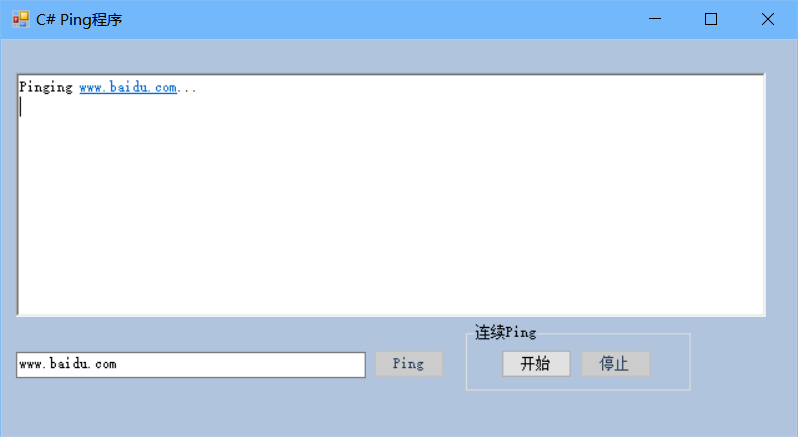
出现错误:
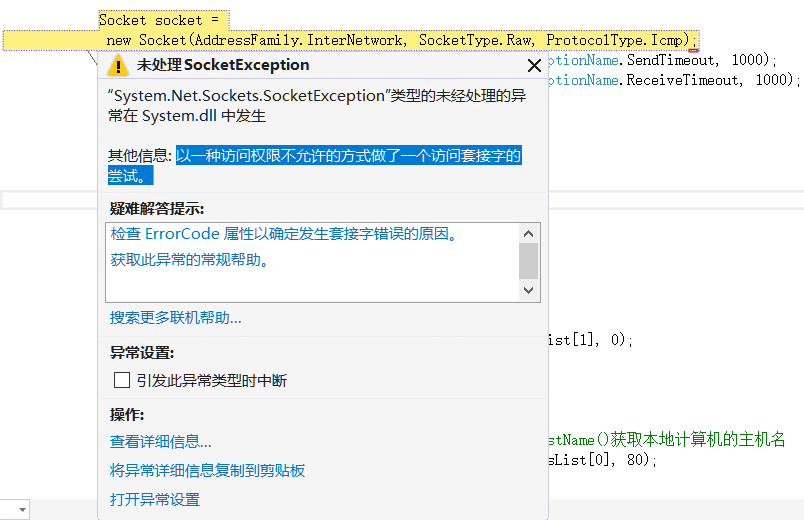
程序的基本实现是这样,但会出现访问权限不足的问题,以后再解决。
实验文档:https://files.cnblogs.com/files/MenAngel/Socket.zip

